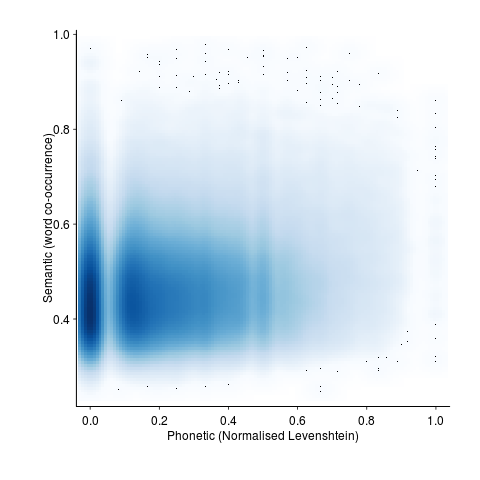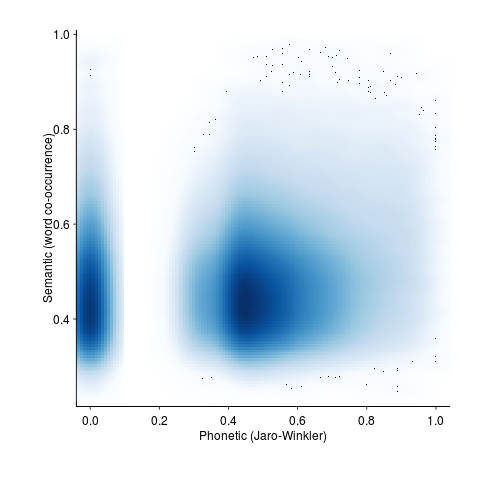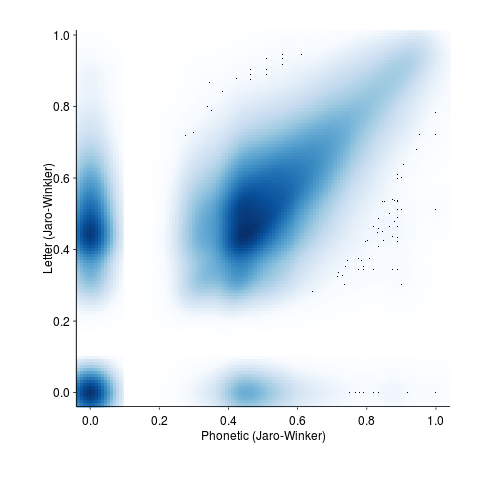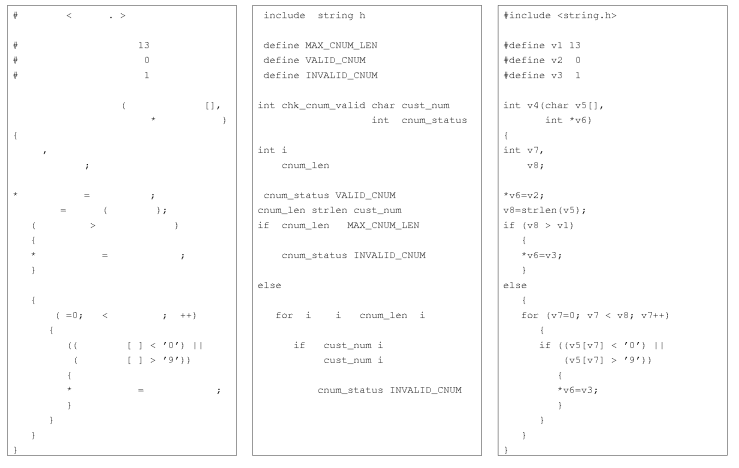Archive
R’s plot function, the 1970’s retro look is not cool any more
Casual users of a system want to learn a few simple rules that enable them to get most things done. Many languages have a design principle of only providing one way of doing things. Members of one language family are known for providing umpteen different ways of doing something and R is no exception.
R comes with the plot function as part of the base system. I am an admirer of plot‘s ability to take whatever is thrown at it and generally produce a workman-like graphical image; workman-like is a kinder description than 1970’s retro look.
R has a thriving library of add-on packages and the package ggplot2 is a byword for fancy graphics in the R community. Anybody reading the description of the qplot function, in this package, would think it is the death kneel for plot. They would be wrong, qplot contains a fatal flaw, it does a very poor job of handling the simple stuff (often generating weird error messages in the process).
In the beginning I’m sure Hadley Wickham, the design+implementor of ggplot/ggplot2, was more concerned with getting his ideas implemented and was not looking to produce a replacement for plot. Unfortunately it looks as-if the vision for functions in the ggplot package is as high-end plot replacements (i.e., for power users) and not as universal plot replacements (i.e., support for casual users).
This leaves me pulling my hair out trying to produce beautiful looking graphs for a book I am working on. The readership are likely to be casual users of R and I am trying to recommend one way of doing something for every task. The source code+data of all the examples will be freely available and I’m eating my own dog food, so its plot I have to use.
Semantic vs phonetic similarity for word pairs: a weekend investigation
The Computational Semantics hackathon was one of the events I attended last weekend. Most if the suggested problems either looked like they could not reasonably be done in a weekend (it ran 10:00-17:00 on both days, I know academics hacks) or were uninspiring coding problems. Chatting to some of the academics present threw up an interesting idea that involved comparing word pair semantic and phonetic similarity (I have written about my interest in sounds-like and source code identifiers).
Team Semantic-sounds consisted of Pavel and yours truly (code and data).
The linguists I chatted to seemed to think that there would be a lot of word pairs that sounded alike and were semantically similar; I did not succeed it getting any of them to put a percentage to “a lot”. From the human communication point of view, words that both sound alike and have a similar meaning are likely to be confused with each other; should such pairs come into existence they are likely to quickly disappear, at least if the words are in common usage. Sound symbolism related issues got mentioned several times, but we did not have any data to check out the academic enthusiasm.
One of the datasets supplied by the organizers was word semantic similarity data extracted from the Google news corpus. The similarity measure is based on similarity of occurrence, e.g., the two sentences “I like licking ice-cream” and “I like eating ice-cream” suggest a degree of semantic similarity between the words licking and eating; given enough sentences containing licking and eating there are clever ways of calculating a value that can be viewed as a measure of word similarity.
The data contained 72,000+ words, giving a possible half a billion pairs (most having zero similarity). To prune this down a bit we took, for each word, the 150 other words that were most similar to it, giving around 10 million word pairs. Each word was converted to a phoneme sequence and a similarity distance calculated for each pair of phoneme sequences (which we called phonetic distance and claimed it was a measure of how similar the words sounded to each other).
The list of word pairs with high semantic/phonetic similarity was very noisy, with lots of pairs containing the same base word in plural, past tense or some other form, e.g., billion and billions. A Porter stemmer was used to remove all pairs where the words shared the same stem, reducing the list to 2.5 million pairs. Most of the noise now came from differences in British/American spelling. We removed all word pairs that contained a word that was not in the list of words that occurred in the common subset of the British and American dictionaries used by aspell; this reduced the list to half a million pairs.
The output contained some interesting pairs, including: faultless/flawless, astonishingly/astoundingly, abysmal/dismal and elusive/illusive. These look like rarely used words to me (not enough time to add in word frequency counts).
Some pairs had surprisingly low similarity, e.g., artifact/artefact (the British/American spelling equality idea has a far from perfect implementation). Is this lower than expected semantic similarity because there is a noticeable British/American usage difference? An idea for a future hack.
A smoothed scatter plot of semantic vs phonetic similarity (for the most filtered pair list) shows lots of semantically similar pairs that don’t sound alike, but a few that do (I suspect that most of these are noise that better stemming and spell checking will filter out). The following uses Levenshtein distance for phoneme similarity, normalised by the maximum distance for a given phoneme sequence with all phoneme differences having equal weight:

and using Jaro-Winkler distance (an alternative distance metric that is faster to calculate):

The empty band at low phonetic similarity is an artifact of the data being quantized (i.e., words contain a small number of components).
Is it worth going to the trouble of comparing phoneme sequences? Would comparing letter sequences be just as good? The following plot shows word pair letter distance vs phonetic similarity distance (there is a noticeable amount of off-diagonal data, i.e., for some pairs letter/phoneme differences are large):

Its always good to have some numbers to go with graphical data. The following is the number of pairs having a given phonetic similarity (remember the starting point was the top 150 most semantically similar pairs). The spikes are cause by the discrete nature of word components.

Squinting at the above it is possible to see an exponential decline as phonetic word similarity increases. It would be interesting to have enough data to display a meaningful 3D plot, perhaps a plane can be fitted (with a log scale on the z-axis).
Rather than using the Google news corpus data as the basis of word pair semantic similarity we could have used the synonym sets from Wordnet. This rather obvious idea did not occur to me until later Saturday and there was no time to investigate. How did the small number of people who created the Wordnet data come up with lists of synonyms? If they simply thought very hard they might have been subject to the availability bias, preferentially producing lists of synonyms that contained many words that sounded alike because those that did not sound alike were less likely to be recalled. Another interesting idea to check out at another hack.
It was an interesting hack and as often happens more new questions were raised than were answered.
A disheartening Space Apps hackathon
Every hackathon has its share of crazies, fortunately they rarely achieve sufficient critical mass to bother anybody else, generally wandering harmlessly around the venue. Hackathons involving outer space attracts crazies in droves and much of the first day is spent with everybody floating around in zero gravity.
This morning I stopped by the NASA SpaceApp hackathon in London to pick up my pass, say hi to a few people I knew were going and let them know I would be back later. A computational semantics hackathon was happening a few miles away, but finishing for the day at five (I know, academic hackathons). My plan was do interesting language analysis stuff, giving the crazies plenty of time to save the world (and then leave), before I returned to spend the rest of the weekend hacking on something space’ish.
The computational semantics hack was as interesting as it promised to be and I’m returning to it tomorrow (not the original plan).
I returned to the SpaceApp hack to find that while most of the crazies had gone, a lot of developers had also left. Had the crazies caused those with a firmer grip on reality to flee to the hills? The lack of coffee (yes, I did check several times that there were no plans to supply any coffee for the duration) and the wifi not being able to support everybody could not have helped. The few developers left (a fare few engineers, designers and ‘ideas’ people were still there) seemed to have been reduced to nibbling away at uninteresting bits (to me at least) of big problems. I left disheartened.
I think that part of the reason that non-crazies have trouble connecting with NASA’s proposed plans is that it is hard to tell the difference between NASA and the crazies. NASA’s mission has always been about politics first and science second. First as a means of boosting the US image around the world (the moon landing years) and then as a means of pork-barrel funding for favored politicians. To keep serious funding rolling in NASA has to ignite the public imagination. Fortunately for them the public is not very good at working out the economics of the proposed ventures (e.g., Google search on economics of asteroid mining to find plenty of articles exposing the economics flaws of this proposal).
While I am happy for the US taxpayer to funding NASA to do interesting space stuff and share it with the rest of the world, I do wish they could do it in a way that made technical and economic sense (I have no problem with them feeding the crazies, who have as much right to enjoy hackathons as the rest of us).
Entropy: Software researchers go to topic when they have no idea what else to talk about
If I’m reading a software engineering paper or blog and it starts discussing entropy my default behavior is to stop reading and move along. Entropy is what software researchers talk about when they cannot think of anything else to say about a topic.
The term entropy was first used in thermodynamics, around the mid-1800s, to define the relationship between the temperature of a body and its heat content. Once people found out that molecules could exist in different energy states within solids they realized that temperature was actually an average of the different energies of the molecules in a body and that heat content was the sum of the vibrational and kinetic energies of the molecules within a body. These insights enabled entropy to also be defined in terms of the number of states that the molecules within a body could exist in, and the probability of these states being occupied; statistical mechanics, a specialist field within thermodynamics, was born. Note, it is a common mistake to associate entropy with disorder (and lets bang that point home).
The problem with the term Entropy, outside of thermodynamics, is that people conflate, confuse and co-mingle various concepts associated with it. In fact this is one of the reasons Shannon chose to associate the word Entropy with his new theory of information, as he told it: Von Neumann told me, “You should call it entropy, for two reasons. In the first place your uncertainty function has been used in statistical mechanics under that name, so it already has a name. In the second place, and more important, nobody knows what entropy really is, so in a debate you will always have the advantage.”
While Shannon’s paper A Mathematical Theory of Communication is his most cited work, the second paper Prediction and Entropy of English has probably had a bigger impact in the world of techno-babble.
Shannon’s famous entropy formula is  , where there are
, where there are  possible events with
possible events with  the probability of event
the probability of event  occurring and
occurring and  some constant. The derivation and use of this formula depends on various assumptions being true, perhaps the most important being that successive symbols are independent; if the next symbol depends on what went before it the formula is more complicated and we are now dealing with conditional entropy.
some constant. The derivation and use of this formula depends on various assumptions being true, perhaps the most important being that successive symbols are independent; if the next symbol depends on what went before it the formula is more complicated and we are now dealing with conditional entropy.
Source code, to quiet a good approximation, consists of a sequence of symbols that alternate between symbols selected from two separate alphabets, the alphabet of punctuators/operators and the alphabet of ‘words’. The following shows the source of a program separated into these two sets of symbols.

Source code, created as it is from an alternating sequence of two different symbol sets, has none of the characteristics assumed in Shannon’s formula derivation or by Maxwell & Boltzmann in their statistical mechanics derivation. Now source code might be usefully analysed using n-grams, but unless we let the  go to infinity
go to infinity  does not get a look-in.
does not get a look-in.
Lets drive another nail into this source code entropy nonsense.
Entropy techno-babble and the second law of thermodynamics are frequent bedfellows. This law specifies that the entropy of a closed system never decreases, it either stays the same or increases. Now very many source code attributes have been found to be proportional to the log of the amount of code (as measured in lines); this is potentially a big problem for those wanting to calculate the entropy of source (it is a repeat of the Gibbs paradox).
If a function (which is claimed to have entropy  ) is split in half to create two functions, the second law of thermodynamics requires that the sum of the entropies of the two new functions should be at least
) is split in half to create two functions, the second law of thermodynamics requires that the sum of the entropies of the two new functions should be at least  . Entropy cannot scale logarithmically because splitting a function in two would reduce total entropy (i.e.,
. Entropy cannot scale logarithmically because splitting a function in two would reduce total entropy (i.e.,  , when
, when  ). So source code entropy has to be an attributes that does not scale logarithmically, which goes against most of what is known about source.
). So source code entropy has to be an attributes that does not scale logarithmically, which goes against most of what is known about source.
If source code does not follow Maxwell–Boltzmann statistics (the equations obtained by working through the ideas behind statistical mechanics), what kind of statistics might it follow? Strange as it might sound, quantum mechanics offers some pointers. Fermi–Dirac and Bose–Einstein statistics are the result of working through the mathematics of small numbers of particles having particular attributes; most functions are small and far removed from the large number of items assumed in the derivation of Maxwell–Boltzmann statistics.
I appreciate that by pointing out the parallel with quantum mechanics I am running the risk of entanglement replacing entropy as the go to topic for researchers scraping the barrel for something to talk about. But at least the mathematics of small numbers of items obeying certain rules is a model that is closer to source code.
Recent Comments